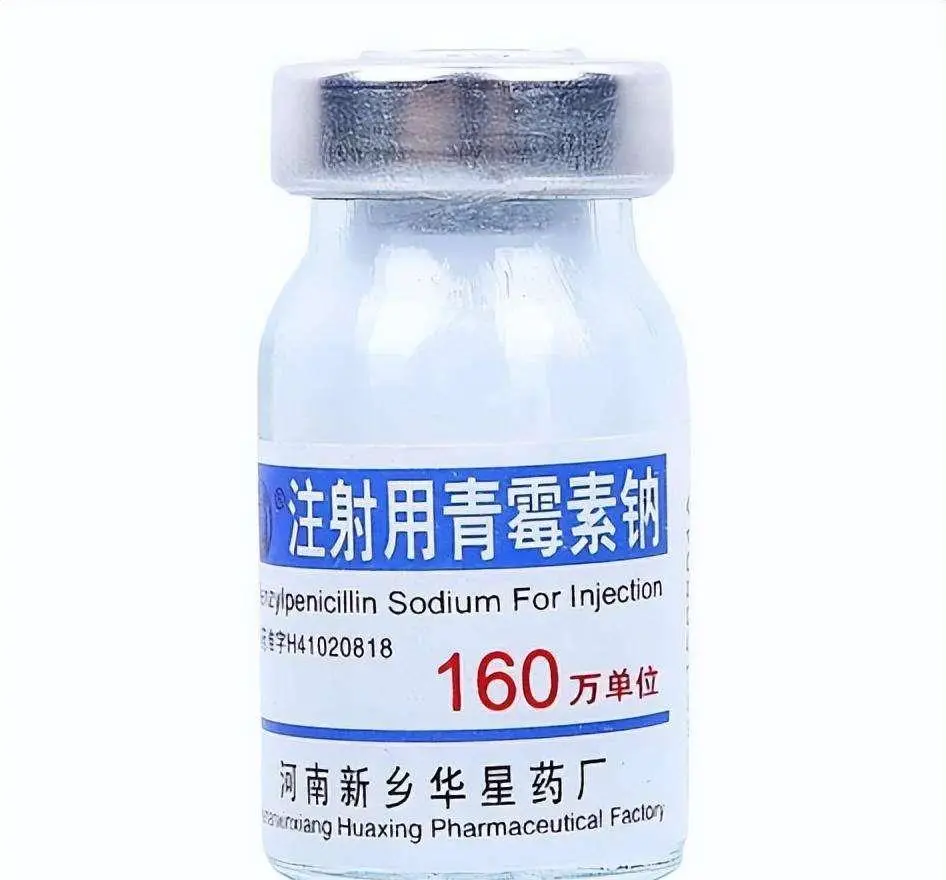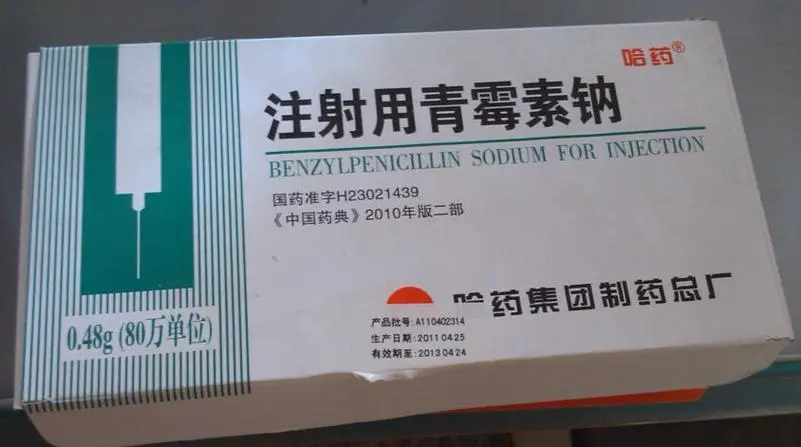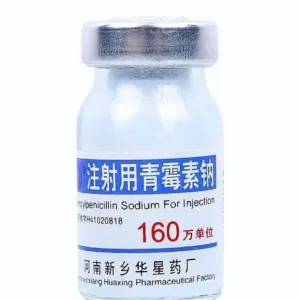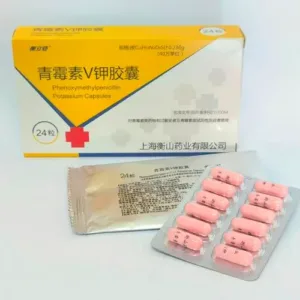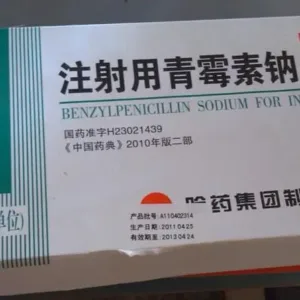Penicillin sodium for injection
Effects and efficacy:
Penicillin is suitable for various infections caused by Gram-positive cocci such as group A and group B hemolytic streptococci, Streptococcus pneumoniae, and penicillin-sensitive Staphylococcus aureus (but more than 90% of Staphylococcus aureus can produce penicillinase, which inactivates penicillin), such as bloodstream infection, pneumonia, meningitis, tonsillitis, otitis media, scarlet fever, erysipelas, puerperal fever, etc. It is also used to treat endocarditis caused by viridans streptococci and enterococci (in combination with aminoglycosides), tetanus, gas gangrene, diphtheria, epidemic cerebrospinal meningitis, rat-bite fever, syphilis, leptospirosis, Vincent angina, actinomycosis, etc. caused by Clostridium.
Usage and Dosage:
Penicillin can be administered intramuscularly or intravenously. When the daily dose for adults exceeds 5 million U, it is recommended to be administered intravenously. Penicillin sodium should be used for intravenous administration, preferably by intravenous drip in divided doses, generally once every 6 hours. Please follow your doctor’s advice for details. The usual dose for adults is 800,000-2 million U per day for intramuscular injection, divided into 3-4 doses; for intravenous drip, 2 million-10 million U per day, divided into 2-4 doses. For patients with impaired renal function, when the glomerular filtration rate (GFR) is 10-15 ml/min, the dosing interval is extended from 8 hours to 8-12 hours or the dose is reduced by 25%. When the GFR is less than 10 ml/min, the dosing interval is 12-18 hours or the dose is reduced to 25%-50% of the normal dose. Usually, patients with mild to moderate renal impairment do not need to reduce the conventional dose; those with severe renal impairment need to adjust the dose or extend the dosing interval. Intramuscular injection for general infections in children: 25,000-50,000 U/kg per day, 800,000-1.6 million U/m, divided into 2-4 doses. Intravenous drip: Pneumonia sepsis, 50,000-200,000 U/kg per day, divided into 2-4 times; epidemic cerebrospinal meningitis, 200,000-400,000 U/kg per day; pneumococcal meningitis and subacute endocarditis, 400,000-600,000 U/kg per day, once every 6 hours; intrathecal injection, 5000-10,000 U (1000 U/ml) per day; intrathoracic injection, 50,000-100,000 U (2000-5000 U/ml) per time. Neonatal dose Neonates (full-term): 50,000 U/kg once, intravenous administration; once every 12 hours in the first week after birth; once every 8 hours after 7 days of age; once every 6 hours for severe infection. Premature infant dose intravenous drip; in the first week, 30,000 U/kg once, once every 12 hours; once every 8 hours at 2-4 weeks of age, and once every 6 hours thereafter. Note: For intramuscular injection of 500,000 U of sodium or potassium penicillin, add 1 ml of sterile injection water to dissolve it; for more than 500,000 U, add 2 ml of sterile injection water; sodium chloride injection should not be used as a solvent. The rate of intravenous administration should not exceed 500,000 U per minute to avoid central nervous system toxicity. Penicillin potassium or sodium is very soluble in water. The β-lactam ring in the aqueous solution is easily cleaved. The hydrolysis rate accelerates with increasing temperature and cleaves into inactive metabolites penicillic acid and penicillothiazole acid. The latter two can reduce the pH value and further enhance the hydrolysis of penicillin, so the injection should be freshly prepared and used.
Adverse reactions:
Allergic reactions Although penicillin has low toxicity, allergic reactions are more common and rank first among various anti-infective drugs. The incidence of severe allergic reactions, namely anaphylactic shock (type I hypersensitivity), is 0.004%-0.015%. If not rescued in time, the mortality rate is high. Therefore, once an allergic reaction occurs, it must be rescued on the spot. Immediately give the patient 0.5-1ml of 0.1% epinephrine intramuscularly; if necessary, dilute it with 5% glucose injection or sodium chloride injection and inject it intravenously. If there is no improvement in clinical manifestations, repeat it once half an hour later. For patients with cardiac arrest, epinephrine can be injected intracardially, and a large dose of adrenocortical hormone can be dripped intravenously at the same time, and blood volume can be supplemented; for patients whose blood pressure does not rise for a long time, vasoactive drugs such as dopamine can be given. Antihistamines can also be considered to relieve urticaria. Those with dyspnea should be given oxygen inhalation or artificial respiration, and those with obvious laryngeal edema should have a tracheotomy in time. The use of penicillinase is of little significance, because although this enzyme can destroy penicillin, it has no effect on the antigen-antibody complex that has been formed, and it can also produce allergic reactions itself. Serum sickness-like reactions (type III allergic reactions) are also common, with an incidence of 1%-7%. Other allergic reactions include hemolytic anemia (type II allergic reactions), drug rash (referred to as drug rash), contact dermatitis, interstitial nephritis, asthma attacks, etc. Toxic reactions are rare, and peripheral neuritis may occur in the area where penicillin is injected intramuscularly. Intrathecal injection of more than 20,000 U or intravenous infusion of large doses of penicillin can cause muscle clonus, convulsions, coma and other reactions (penicillin encephalopathy). This reaction is more common in infants, the elderly and patients with renal impairment. Penicillin can occasionally cause psychotic episodes. After the use of procaine penicillin, some patients may experience anxiety, fever, rapid breathing, hypertension, increased heart rate, hallucinations, convulsions, coma, etc. The mechanism of this reaction is unknown. Electrolyte disorders: 1 million U (0.625 g) of penicillin potassium contains 1.5 mmol (0.066 g) of potassium ions. If a large amount of penicillin potassium is given intravenously, hyperkalemia or potassium poisoning reactions may occur. 1 million U (0.6 g) of penicillin sodium contains 1.7 mmol (0.039 g) of sodium ions. After large doses, hypernatremia can be caused, especially in patients with renal impairment or heart failure. After giving patients 100 million U of sodium penicillin daily, a few patients developed hypokalemia, metabolic alkalosis and hypernatremia. Herxheimer’s reaction: When using penicillin to treat syphilis, leptospirosis or other infections, symptoms may be aggravated, which is called Herxheimer’s reaction. It is a systemic reaction caused by the killing of a large number of pathogens. Treatment contradiction: It occurs in patients with syphilis. It is caused by the fact that the syphilis lesions disappear too quickly after treatment, but the tissue repair is slow, or the fibrous tissue shrinks, hindering organ function. Superinfection: During penicillin treatment, penicillin-resistant Staphylococcus aureus, Gram-negative rods or Candida albicans infections may occur. Excessive reproduction of Candida can make the tongue coating brown or even black.
Drug contraindications:
Allergic to this product is prohibited. Use with caution during lactation and pregnancy.
Share:
Products
Our offers
Health Classification
Let us work together to protect precious health

